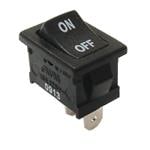Electronics-free robot powered by compressed gas
Roboticists based at the Bioinspired Robotics Laboratory at the University of California San Diego have managed to use 3D printing to create an electronics-free robot made from one material, using a cartridge of compressed gas.
To achieve this, the researchers used a desktop 3D printer and off-the-shelf printing material, a robust design that is also cost-effective. Each robot cost around $20 to manufacture.
“This is a completely different way of looking at building machines,” said Michael Tolley, a professor in the UC San Diego Department of Mechanical and Aerospace Engineering and the paper’s senior author.
The idea behind the electronics-free design is that these robots could be applied to settings where electronics are unable to function; such as scientific reconnaissance in areas with strong radiation, or disaster response or space exploration.
The robots were tested in the lab where the researchers demonstrated that provided they were connected to a source of air or gas under constant pressure, they could function non-stop for three days. The robots were able to walk outdoors, untethered, using a compressed gas cartridge as a power source, and navigate different surfaces including turf, sand, and underwater.
The goal was to design robots that could ‘walk right off the printer’ with an air power source but also to do so using flexible, soft materials.
“These robots are not manufactured with any of the traditional, rigid components researchers typically use,” said Tolley. They are made from 3D printing filament.
The greatest challenge was creating a design that would include artificial muscles and a control system made from the same soft material in a single print.
The team, led by postdoctoral scholar Yichen Zhai in Tolley’s research group at the UC San Diego Jacobs School of Engineering, adapted a 3D printing technique that they used previously to build an electronics-free gripper. Their efforts led to the fabrication of a six-legged robot.
“We have taken a giant leap forward with a robot that walks entirely on its own,” stated Zhai.
To allow the robots to move, the team created a pneumatic oscillating circuit to control the repeated motions of soft actuators, much like the mechanism that drives a locomotive’s steam engine. The circuit coordinates the movement of the six legs by delivering air pressure at the right time, and alternate between two sets of three legs.
The robots’ legs are able to move in four degrees of freedom: up and down, forward and back, which allows the robot to walk in a straight line.
For the researchers, the next steps will be to find ways to store the compressed gas inside the robots and using recyclable or biodegradable materials. They are also exploring ways to add manipulators, such as grippers, to the robots.
Tolley’s lab partnered with the BASF corporation through their California Research Alliance (CARA) to test various soft materials that could be used on standard 3D printers. Some of the high-end materials they tested are not commercially available, but researchers also successfully printed the robots with off-the-shelf, standard materials.







